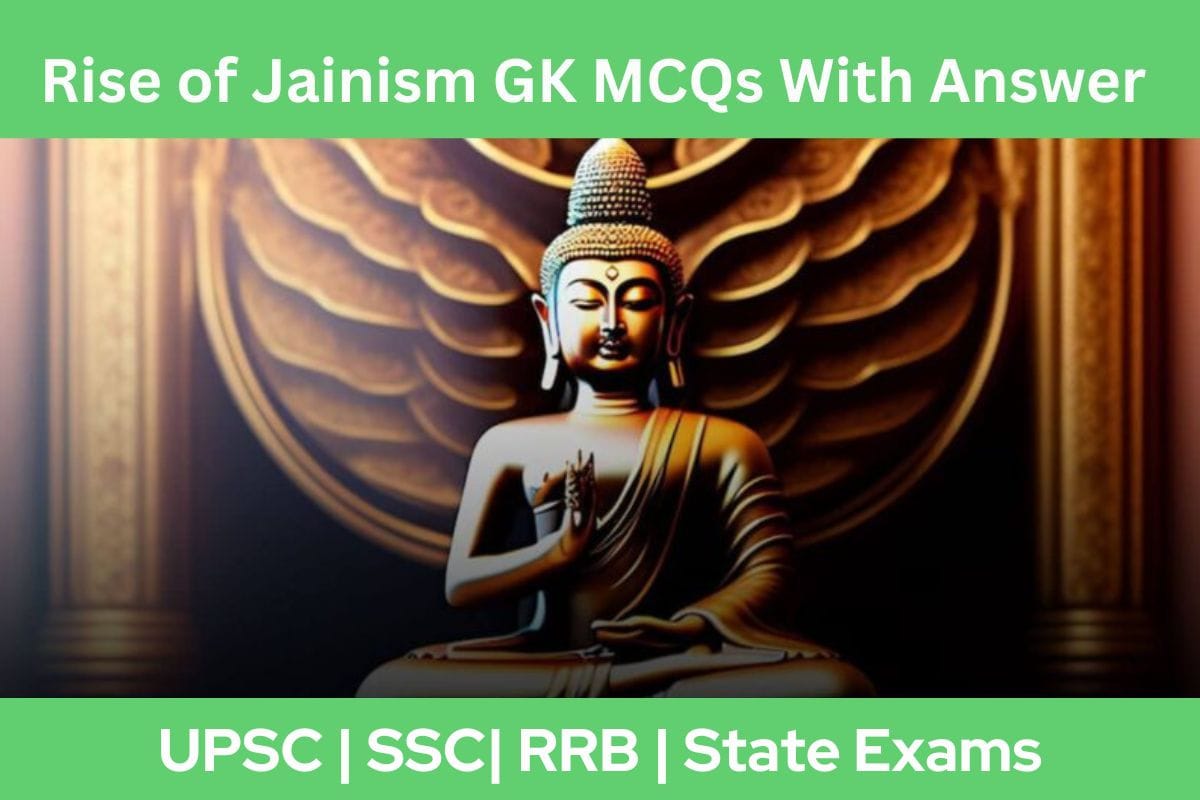
11. The Digambaras used which of the following terms for the hagiographies?
- Purana
- Charita
- Agama
- None of the above
Show Answer
Correct Answer: Purana
In Jainism, the Digambara sect and the Shwetambara sect have differences in terminology for hagiographies (biographical texts). The Digambara sect uses the term “Purana,” while the Shwetambara sect uses the term “Charita.” These texts narrate the life stories and teachings of Tirthankaras, including Mahavira, and reflect variations in religious traditions between the two sects.
12. Where was the first Jain council held?
- Patliputra
- Vallabhi
- Ujjain
- Patna
Show Answer
Correct Answer: Patliputra
The first Jain council, known as the first Bhagavati Sutra Council, was convened in 310 BCE in Patliputra. This assembly resulted in the compilation of the 12 Angas, sacred Jain texts that replaced the Purvas, which were rejected by the Digambara sect. Sthulabhadra served as the president of this council.
13. Which among the following defines the similarities between Buddhism and Jainism?
- Both opposed Brahmanical domination and caste system
- Both accepted the theories of rebirth
- Both preached truth and non-violence
- All of the above
Show Answer
Correct Answer: All of the above
Buddhism and Jainism share several similarities, including opposition to Brahmanical domination and the caste system, acceptance of the doctrines of rebirth and karma, and the advocacy of truth, non-violence, celibacy, and detachment from material comforts. These commonalities reflect the historical and philosophical intersections between the two religious traditions.
14. Who built the Gomateshwara statue at Sravanabelagola?
- Chandragupta Maurya
- Kharvela
- Amoghavarsha
- Chamundaraya
Show Answer
Correct Answer: Chamundaraya
The Gomateshwara statue at Sravanabelagola, Karnataka, was commissioned by Chamundaraya, a minister and commander of the Ganga dynasty. This monolithic statue stands 60 feet tall and is a significant Jain pilgrimage site, symbolizing spiritual and architectural excellence.
15. Acharanga Sutra is associated with which of the following religions?
- Jainism
- Buddhism
- Sikhism
- Ayyavazhi
Show Answer
Correct Answer: Jainism
Acharanga Sutra is a sacred Jain text and one of the Agamas, which are religious texts based on the teachings of Mahavira. These texts are foundational in Jain scripture and provide guidance on ethics, doctrine, and conduct.
16. The famous book Sutrakritanga provides detailed information about the life of:
- Mahavira
- Gautama Buddha
- Kapila
- Basavanna
Show Answer
Correct Answer: Mahavira
The Sutrakritanga is an Agama that offers detailed information about the life of Mahavira, the 24th and last Tirthankara of Jainism. It provides insights into his teachings, principles, and life events.
17. Nakoda at Rajasthan, which is famous for miracles, is a temple of which among the following?
- Vishnu
- Krishna
- Buddha
- Parsvanath
Show Answer
Correct Answer: Parsvanath
Nakoda in Rajasthan is a temple dedicated to Tirthankara Parsvanath, the 23rd Tirthankara in Jainism. It is a place of pilgrimage for Jains, and the temple is dedicated to the worship of Parsvanath.
18. Who has written “Kalpsutra”?
- Haribhadra
- Bhadrabahu
- Sudharma Swami
- Nemichandra
Show Answer
Correct Answer: Bhadrabahu
“Kalpsutra” is a Jain text written by Bhadrabahu. It contains biographies of the Jain Tirthankaras, including Mahavira. This text is an essential source for understanding Jain religious history and teachings.
19. Which site in Bihar is a pilgrimage place for both Buddhism and Jainism?
- Bodhgaya
- Rajgir
- Nalanda
- Vaishali
Show Answer
Correct Answer: Bodhgaya
Bodhgaya, located in Bihar, is a significant pilgrimage site for both Buddhism and Jainism. It is the place where Gautama Buddha attained enlightenment under the Bodhi tree. For Jains, it is associated with Mahavira’s spiritual activities.
20. Who was the first Tirthankara of Jainism?
- Rishabhdev
- Parshwanath
- Neminath
- Sambhavanath
Show Answer
Correct Answer: Rishabhdev
Rishabhdev, also known as Adinath, was the first Tirthankara of Jainism. He is considered an avatar or incarnation of Lord Vishnu in Hinduism.


Leave a Reply